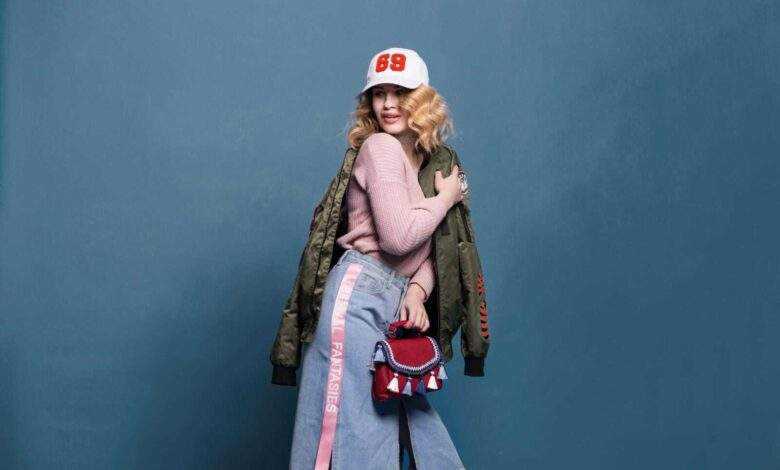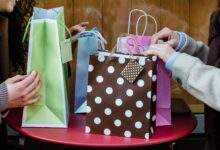Sustainable Fashion on a Budget: Thrifting Tips and Eco-Conscious Brands

Table of Contents
Your Guide to Eco-Conscious Fashion
A. The Rise of Sustainable Fashion
The fashion industry is one of the largest contributors to environmental pollution. Fast fashion, characterized by cheap, trendy clothing produced rapidly to meet consumer demand, has led to significant waste, pollution, and unethical labor practices. In response, there is a growing movement towards sustainable fashion, which prioritizes environmentally friendly practices, ethical labor, and longevity in clothing. Consumers are becoming more aware of the impact their choices have on the planet and are seeking alternatives that align with their values.
B. Unveiling the Power of Sustainable Fashion on a Budget
Sustainable fashion does not have to be expensive. Many people assume that eco-conscious clothing requires a hefty price tag, but there are various affordable approaches to building a sustainable wardrobe. Thrifting, upcycling, and supporting ethical brands that offer budget-friendly options are just a few ways to embrace sustainable fashion without breaking the bank. By making mindful choices, you can enjoy stylish and unique pieces while minimizing your environmental footprint.
C. Benefits of Sustainable Fashion on a Budget
Exploring sustainable fashion on a budget offers numerous advantages:
- Reduced Environmental Impact: Choosing sustainable fashion helps minimize waste, pollution, and the overall carbon footprint of the fashion industry.
- Unique and Stylish Finds: Thrifting and vintage shopping allow you to discover one-of-a-kind pieces that stand out from mass-produced clothing.
- Empowerment Through Conscious Choices: Making eco-conscious fashion choices fosters a sense of empowerment, knowing you are contributing to a better planet.
- Cost-Effectiveness: Thrifting, upcycling, and finding ethical brands with affordable options can help stretch your fashion budget further.
D. Embracing Sustainable Style: Your Budget-Friendly Guide
Exploring sustainable fashion on a budget can be both exciting and rewarding. This guide will provide practical tips and resources to help you navigate the world of eco-conscious fashion without overspending. From thrifting tips to affordable ethical brands, you will find everything you need to start your sustainable style journey. Get ready to discover how you can look stylish, save money, and make a positive impact on the environment.
Thriving with Thrifting
Thrifting is one of the most affordable and sustainable ways to build your wardrobe. Here are some tips to make the most of your thrifting experience:
- Plan Ahead: Have a list of items you need or specific styles you are looking for to stay focused and avoid unnecessary purchases.
- Visit Different Stores: Explore various thrift stores in your area to increase your chances of finding unique pieces.
- Check for Quality: Inspect items for any damage or signs of wear. Look for high-quality fabrics and well-constructed garments that will last.
- Be Patient: Thrifting can be hit or miss, so take your time and visit stores regularly to find the best deals.
Online Thrift Stores and Apps
- ThredUP: An online consignment and thrift store offering a wide range of secondhand clothing.
- Poshmark: A platform where users can buy and sell new and gently used clothing.
- Depop: A fashion marketplace app where users can buy, sell, and discover unique fashion pieces.
Ethical Brands with Affordable Options
Many ethical brands offer stylish and affordable clothing options. Here are a few to consider:
- Everlane: Known for its transparent pricing and sustainable practices, Everlane offers high-quality basics at reasonable prices.
- Pact: This brand focuses on organic cotton clothing and fair trade practices, offering affordable and comfortable wardrobe staples.
- Boody: Specializes in eco-friendly basics made from bamboo, providing affordable and sustainable options.
DIY and Upcycling
Upcycling and DIY projects are fantastic ways to refresh your wardrobe sustainably. Here are some ideas:
- Alterations: Tailor thrifted items to fit perfectly or transform them into something new.
- Embroidery: Add unique designs to plain clothing pieces to give them a personal touch.
- Dyeing: Use natural dyes to refresh the color of faded or stained clothing.
Resources for DIY and Upcycling
- YouTube Channels: Channels like With Wendy and Coolirpa offer tutorials on upcycling and DIY fashion projects.
- Pinterest: A great platform for finding inspiration and step-by-step guides for various upcycling projects.
Embracing sustainable fashion on a budget is a rewarding journey that benefits both you and the planet. By choosing eco-friendly alternatives, thrifting, supporting ethical brands, and exploring DIY projects, you can build a stylish, unique wardrobe without overspending.
Actionable Steps:
- Start Small: Incorporate one or two sustainable practices into your wardrobe. Visit a thrift store or try a DIY project.
- Explore Resources: Use the tips and resources provided to find inspiration and guidance.
- Share Your Journey: Encourage others to embrace sustainable fashion by sharing your experiences.
The Future of Sustainable Fashion
Sustainable fashion is gaining momentum, and its positive impact on the industry is becoming increasingly evident. As more consumers demand eco-friendly options, the availability of sustainable products continues to grow. By making conscious choices, you can contribute to this movement and help shape the future of fashion.
Mastering the Art of Thrifting
A. Uncovering the Thrifting Treasure Trove
Thrifting is an excellent way to embrace sustainable fashion while keeping your budget in check. By purchasing secondhand items, you contribute to reducing waste and minimizing the demand for fast fashion. Thrift stores are treasure troves filled with unique and stylish pieces that you won’t find in regular retail stores.
To find the best thrift stores in your area, start by researching online reviews on platforms like Yelp or Google. These reviews often provide insights into the variety and quality of items available. Explore local charity shops such as Goodwill and the Salvation Army, as they often have a wide range of clothing, accessories, and home décor at affordable prices. Consignment stores are another excellent option, offering higher-end items that have been carefully curated.
Websites like Thrift Shopper provide directories of thrift stores across the U.S., making it easier to find shops near you. Additionally, local Facebook groups and community boards can be valuable resources for discovering hidden gems in your area.
B. Like a Pro: Essential Thrifting Tips
Equipping yourself with the right strategies can make your thrifting experience both successful and rewarding. Here are some practical tips to help you navigate the thrift store like a pro:
- Plan Your Shopping Trip: Before heading out, determine what specific items you are looking for. This focus helps maximize efficiency and prevents impulse purchases.
- Go Beyond First Impressions: Don’t be discouraged by minor flaws in garments. Look past these imperfections and envision the potential of the piece. Sometimes, a simple alteration or cleaning can transform an item into a wardrobe staple.
- Inspect Clothes Carefully: Check items thoroughly for stains, rips, and missing buttons before making a purchase. Small repairs are manageable, but extensive damage might not be worth the investment.
- Embrace the Try-On Session: Always try on clothes to ensure they fit well and suit your style. Thrift stores often have a variety of brands, and sizes can vary significantly.
- Negotiate When Possible: Some thrift stores might allow reasonable haggling, especially if you find minor flaws in an item. It never hurts to ask for a discount politely.
Learning how to assess quality and identify vintage or designer pieces can significantly enhance your thrifting skills. Resources like The Art of Vintage: A Beginner’s Guide provide valuable tips on identifying quality materials, craftsmanship, and authentic vintage items.
C. Thrifting Beyond Clothing
Thrifting isn’t limited to clothing; it’s also a fantastic way to find unique and sustainable accessories. Scarves, belts, and jewelry are often available at thrift stores for a fraction of their original price. These accessories can add a touch of personality to your outfits and are often timeless pieces.
In addition to fashion items, consider exploring thrift stores for home décor. You can find everything from vintage furniture and art to kitchenware and textiles. These items can be upcycled or repurposed to add a personalized touch to your home. For example, an old wooden chair can be sanded and painted to match your décor, or a vintage vase can become a centerpiece with a fresh bouquet.
Websites like Apartment Therapy offer inspiration and DIY ideas for upcycling thrifted home décor items. Pinterest is another excellent resource for creative and budget-friendly upcycling projects.
Additional Resources for Thrifting Success
For further exploration and tips on mastering the art of thrifting, consider these resources:
- Books: “A Beginner’s Guide to Vintage Fashion” by Funmi Odulate and “Thrift Style” by Allison Engel, Reise Moore, and Margaret Engel provide in-depth knowledge and practical advice on thrifting and vintage shopping.
- Websites and Blogs: The Good Trade offers articles on sustainable fashion and thrifting tips, while Thrift Diving focuses on DIY and upcycling projects.
- YouTube Channels: Channels like “The Sorry Girls” and “Best Dressed” feature thrifting hauls, styling tips, and DIY upcycling tutorials.
Sustainable Fashion on a Budget: Beyond Thrift Stores
A. Exploring Online Second-Hand Marketplaces
With the rise of digital technology, the popularity of online platforms for buying and selling pre-loved clothing has surged. These platforms provide a convenient way to find high-quality, stylish pieces while promoting sustainability and saving money.
Popular Platforms:
- Poshmark: A widely used app where individuals can buy and sell gently used clothing, shoes, and accessories. It features a user-friendly interface and a strong community of fashion enthusiasts. Poshmark
- Depop: This platform is particularly popular among younger generations and focuses on trendy, vintage, and unique items. It’s a great place to find one-of-a-kind pieces. Depop
- ThredUp: One of the largest online thrift stores, ThredUp offers a vast selection of second-hand clothing and accessories from various brands. They also provide detailed descriptions and condition ratings for each item. ThredUp
- Online Thrift Stores: Websites like Swap.com and Goodwill’s online store offer an extensive range of second-hand items.
Safe Online Transactions:
- Read Reviews: Always check the seller’s reviews and ratings to ensure they are reputable.
- Secure Payments: Use secure payment methods provided by the platform to protect your financial information.
- Detailed Descriptions: Pay attention to detailed descriptions and photos to assess the condition of the item accurately.
Coupon Codes and Discounts:
- ThredUp: Often offers first-time customer discounts and seasonal sales.
- Poshmark: Look for referral codes from friends or influencers for discounts on your first purchase.
B. The Value of Clothing Swaps and Community Events
Clothing swaps are a fantastic way to refresh your wardrobe sustainably and cost-effectively while fostering a sense of community.
Benefits of Clothing Swaps:
- Eco-Friendly: Reduces waste and extends the lifecycle of garments.
- Budget-Friendly: Refresh your wardrobe without spending money.
- Social and Fun: A great way to socialize and connect with others who share your interest in sustainable fashion.
Organizing a Clothing Swap Party:
- Invite Friends and Family: Gather a group of friends or family members willing to participate.
- Set Guidelines: Establish rules for the swap, such as the condition of the items and the number of pieces each person can bring.
- Create a Fun Atmosphere: Arrange the space to resemble a mini-boutique, with clothes neatly displayed. Offer refreshments and play some music to create a pleasant shopping experience.
Finding Clothing Swap Events:
- Local Community Boards: Check local community boards, libraries, and cafes for announcements about upcoming clothing swap events.
- Online Resources: Websites like The Clothing Exchange and Swapsity can help you find swap events in your area.
C. Ethical Fashion Brands on a Budget
It’s a common misconception that all ethical fashion brands are expensive. There are many affordable options available for those looking to make eco-conscious choices.
Affordable Ethical Brands:
- Everlane: Known for its transparent pricing and sustainable practices, Everlane offers high-quality basics at reasonable prices. Everlane
- Pact: Specializes in organic cotton clothing and offers a range of affordable wardrobe essentials. Pact
- Boody: Offers sustainable, comfortable basics made from organic bamboo. Boody
- People Tree: Pioneers in sustainable and fair trade fashion, People Tree offers stylish and affordable options. People Tree
Identifying Authentic Eco-Conscious Brands:
- Certifications: Look for certifications such as Fair Trade, Global Organic Textile Standard (GOTS), and OEKO-TEX.
- Brand Transparency: Research the brand’s website for information on their sustainability practices, sourcing, and labor policies. Authentic brands are usually transparent about their processes and impacts.
Additional Resources
For further exploration and tips on sustainable fashion on a budget, consider these resources:
- Websites and Blogs: The Good Trade offers articles on sustainable fashion and budget-friendly shopping tips, while Eco Warrior Princess focuses on ethical fashion and conscious living.
- Books: “The Conscious Closet” by Elizabeth L. Cline and “Wardrobe Crisis” by Clare Press provide in-depth knowledge and practical advice on building a sustainable wardrobe.
- Online Stores: ThredUp and Pact offer a wide range of affordable, eco-friendly fashion items.
Building a Sustainable Wardrobe on a Budget
A. Cultivating a Capsule Wardrobe
A capsule wardrobe is a minimalist approach to fashion, focusing on a limited number of versatile and interchangeable pieces that can be mixed and matched to create a variety of outfits. This method promotes sustainability by reducing the need for constant new purchases and encourages a thoughtful, curated approach to clothing.
Concept of a Capsule Wardrobe:
- Minimalism and Sustainability: A capsule wardrobe consists of 30-40 essential items, including clothing, shoes, and accessories, that you love and wear regularly. This approach reduces clutter and promotes mindful consumption.
- Cost-Effective: By focusing on quality over quantity, you invest in durable pieces that last longer, ultimately saving money.
Building Your Capsule Wardrobe:
- Assess What You Own: Start by evaluating your current wardrobe. Identify pieces you frequently wear and those that align with your style.
- Select Key Pieces: Choose versatile items such as a classic white shirt, a well-fitted pair of jeans, a blazer, and neutral t-shirts.
- Incorporate Thrifted Finds: Visit local thrift stores or online second-hand platforms to find unique, high-quality pieces at a fraction of the cost.
- Example Resources: Unfancy provides a detailed guide to building a capsule wardrobe, while Project 333 offers a minimalist fashion challenge.
B. The Power of Upcycling and DIY
Upcycling involves transforming existing garments into new, stylish pieces, giving them a second life and reducing waste. This creative approach to fashion allows you to customize your wardrobe while promoting sustainability.
Concept of Upcycling:
- Sustainable and Creative: Upcycling reduces waste and extends the life of garments. It also allows for personalization and creativity.
- Cost-Effective: Instead of buying new clothes, you can refresh your wardrobe by modifying items you already own.
Simple DIY Upcycling Projects:
- Customize a Plain T-Shirt: Use fabric paint, patches, or embroidery to add a personal touch to a plain t-shirt.
- Embellish Jeans: Add patches, fabric paint, or studs to give old jeans a new look.
- Create a Tote Bag: Turn an old t-shirt into a reusable tote bag with minimal sewing skills.
Inspiration and Tutorials:
- Pinterest: Search for “DIY upcycling clothes” for a plethora of ideas and step-by-step tutorials.
- YouTube: Channels like Coolirpa and BlueprintDIY offer tutorials on various upcycling projects.
C. Sustainable Shopping Habits for a Budget-Conscious Fashionista
Adopting mindful shopping habits is essential for building a sustainable and cost-effective wardrobe. By prioritizing quality and versatility, you can create a timeless wardrobe that aligns with your values.
Invest in Quality Basics:
- Durability and Style: Choose classic, well-made pieces such as a little black dress, tailored trousers, and sturdy boots. These items will last longer and never go out of style.
- Example Brands: Look for brands that emphasize quality and sustainability, such as Everlane and Pact.
Prioritize Versatile Pieces:
- Mix and Match: Select garments that can be easily combined to create multiple outfits. A neutral-colored blazer, for instance, can be dressed up or down.
- Wardrobe Staples: Items like a denim jacket, a white button-up shirt, and a black skirt are highly versatile.
Buy Less, but Buy Better:
- Quality Over Quantity: Focus on purchasing fewer items, but ensure they are of high quality. This reduces the frequency of replacements and contributes to a sustainable wardrobe.
- Conscious Purchasing: Before buying, ask yourself if the item fills a gap in your wardrobe and if it will be worn frequently.
Embrace Slow Fashion:
- Avoid Impulse Purchases: Take time to consider purchases and avoid trendy items that may quickly go out of style.
- Timeless Pieces: Prioritize classic, timeless pieces over fleeting trends to build a lasting wardrobe.
Building a sustainable wardrobe on a budget is entirely achievable with a mindful approach. By cultivating a capsule wardrobe, embracing upcycling and DIY projects, and adopting sustainable shopping habits, you can enjoy a stylish and eco-conscious fashion sense. Remember to start small, make thoughtful choices, and explore the numerous resources available to support your journey towards sustainable fashion.
Eco-Conscious Care for Your Wardrobe
A. Extending the Life of Your Clothes
Proper garment care is essential for maximizing the wear of your clothes and minimizing waste. By adopting sustainable laundry practices and learning basic mending skills, you can significantly extend the lifespan of your wardrobe.
Sustainable Laundry Practices:
- Wash Clothes in Cold Water: Washing clothes in cold water not only saves energy but also reduces wear and tear on fabrics, helping them last longer. Cold water is effective for most garments and can help preserve colors.
- Use Eco-Friendly Detergents: Opt for biodegradable, non-toxic laundry detergents. These products are gentle on your clothes and the environment.
- Air-Drying: Whenever possible, air-dry your clothes instead of using a dryer. This method reduces energy consumption and prevents damage caused by high heat. Use a clothesline or drying rack for optimal results.
- Avoid Over-Washing: Only wash clothes when necessary. Over-washing can wear out fabrics more quickly. Spot clean stains and refresh clothes with a fabric spray or steam when appropriate.
Learning Basic Mending Skills:
- Sewing a Button: A loose or missing button is a common issue that can be easily fixed. Learn how to sew a button back on to extend the life of your shirts, jackets, and pants.
- Patching a Small Hole: Small holes can be patched up with simple sewing techniques. You can use fabric patches or sew the hole closed with a needle and thread.
- Hemming and Alterations: Basic hemming skills can help you adjust the length of pants, skirts, or dresses. This ensures a better fit and prolongs the usability of your garments.
Resources for Garment Care and Repair:
- Online Tutorials: Websites like Craftsy and YouTube channels like Professor Pincushion offer free tutorials on basic sewing and mending techniques.
- Books: “Mend & Make Fabulous” by Denise Wild provides step-by-step instructions for common garment repairs and alterations.
- Local Classes: Many community centers and fabric stores offer sewing classes for beginners.
B. The Power of Responsible Disposal
Disposing of clothing responsibly is crucial for reducing textile waste and supporting sustainable fashion practices. Instead of throwing away unwanted clothes, consider these eco-friendly options:
Donating Clothes:
- Thrift Stores and Shelters: Donate gently used clothes to local thrift stores, shelters, or charitable organizations. These donations can help those in need and reduce landfill waste. Websites like Goodwill and The Salvation Army provide information on where to donate.
- Clothing Drives: Participate in community clothing drives or organize one within your neighborhood or workplace.
Clothing Recycling Programs:
- Textile Recycling Bins: Some cities have textile recycling bins where you can drop off old clothes for recycling. Check with your local waste management department for available programs.
- Retailer Programs: Many clothing retailers, such as H&M and Patagonia, offer recycling programs where you can bring in old clothes for proper disposal or repurposing.
- Online Resources: Websites like Earth911 provide directories for locating recycling centers and programs near you.
By adopting sustainable laundry practices, learning basic mending skills, and disposing of clothes responsibly, you can significantly reduce your environmental impact and contribute to a more sustainable fashion industry. These simple yet effective actions not only help the planet but also enhance the longevity and value of your wardrobe.
Sustainable Style FAQs: Look Good, Feel Good, Do Good (on a Budget!)
Embracing sustainable fashion on a budget is a fantastic way to express your style while minimizing your environmental impact. Here are some common questions you might have:
1. I’m not a fashionista. Can I still embrace sustainable fashion?
Absolutely! Sustainable fashion is about making conscious choices, not following trends. You can easily adapt your existing style by incorporating thrifted finds or upcycling old pieces.
2. Thrifting seems intimidating. Where do I start?
Start by researching local thrift stores and charity shops. Look online for reviews and recommendations. Plan your first trip by making a list of what you’re looking for to maximize efficiency. Don’t be afraid to try on clothes and explore different styles!
3. What if I can’t find anything good at the thrift store?
Don’t get discouraged! Thrifting requires patience and persistence. Consider visiting different stores or checking in regularly for new arrivals. You can also explore online second-hand platforms like Poshmark or Depop.
4. Are there any ethical fashion brands that won’t break the bank?
Yes! There’s a growing number of affordable ethical brands. Research brands that prioritize sustainability and transparency. Look for certifications like Fair Trade or GOTS (Global Organic Textile Standard).
5. What are some simple upcycling projects I can try?
Upcycling is easier than you think! Start with small projects like personalizing a plain T-shirt with fabric paint or adding patches to jeans. Online resources offer countless upcycling ideas for all skill levels.
6. How can I care for my clothes sustainably?
Washing clothes in cold water and air-drying whenever possible are simple yet impactful practices. Learn basic mending skills to extend the life of your garments. Consider the environmental impact when choosing laundry detergents.
7. What’s the best way to get rid of clothes I don’t wear anymore?
Donating to thrift stores or shelters gives your unwanted clothes a second life. Explore local clothing recycling programs if available. Avoid throwing away clothes if possible.
8. I shop online a lot. Can I be sustainable about it?
Yes! Research sustainable brands with online stores. Look for brands with transparent practices and eco-friendly packaging. Consider using online platforms like ThredUp or Depop for pre-loved clothing.
9. How can I stay motivated on my sustainable fashion journey?
Follow sustainable fashion influencers and blogs for inspiration. Challenge yourself to incorporate one or two new sustainable practices each month. Share your journey and inspire others through social media.
10. Is sustainable fashion really making a difference?
Absolutely! By making conscious choices about your wardrobe, you’re reducing your environmental footprint and supporting ethical practices. Every sustainable step, big or small, contributes to a positive impact.
Embracing sustainable fashion on a budget is not only achievable but also rewarding. By incorporating thrifting, upcycling, mindful shopping, and proper garment care into your routine, you can enjoy a stylish wardrobe that is kind to both your wallet and the planet. Here are the key takeaways:
- Thrifting and Second-Hand Shopping: Find unique pieces and reduce waste by shopping at thrift stores and online second-hand marketplaces.
- Upcycling and DIY: Get creative with your wardrobe by transforming old garments into new favorites.
- Sustainable Shopping Habits: Prioritize quality over quantity, choose versatile pieces, and avoid impulse purchases.
- Eco-Friendly Garment Care: Extend the life of your clothes with proper washing, mending, and responsible disposal practices.
- Start Small: Challenge yourself to incorporate one or two sustainable practices into your existing routine. For example, start by thrifting your next clothing item or switching to cold water laundry.
- Explore Resources: Use the links below to discover more tips and ideas for sustainable fashion.
- Share Your Journey: Inspire others by sharing your sustainable fashion journey on social media. Use hashtags like #SustainableFashion and #EcoStyle to connect with a community of like-minded individuals.
B. The Future of Sustainable Fashion
The sustainable fashion movement is gaining momentum, with a growing demand for ethical and eco-conscious options. As more consumers prioritize sustainability, the fashion industry is evolving to meet these expectations.
- Innovation and Growth: Expect to see innovative materials, eco-friendly production methods, and circular fashion models become more mainstream.
- Consumer Influence: Your choices as a consumer can drive change. By supporting sustainable brands and practices, you contribute to a greener future.
- Optimism for the Future: With increasing awareness and commitment to sustainability, we can look forward to a future where sustainable fashion becomes the norm rather than the exception.
C. Additional Resources
To help you on your sustainable fashion journey, here is a curated list of resources for further exploration:
- Websites and Blogs:
- Good On You: A comprehensive guide to ethical fashion brands and sustainable shopping tips.
- EcoCult: Articles on sustainable fashion, beauty, and lifestyle.
- Fashion Revolution: Advocacy for a fair and sustainable fashion industry.
- Online Directories:
- The Good Trade: Lists of ethical and sustainable fashion brands.
- Ethical Consumer: Ratings and guides for ethical shopping across various categories.
- Documentaries and Articles:
- Documentaries:
- The True Cost (available on Netflix) – A documentary exploring the impact of fast fashion on people and the planet.
- RiverBlue (available on Amazon Prime) – Examines the environmental impact of the fashion industry on global waterways.
- Articles:
- Vogue Business: The Future of Sustainable Fashion – Insights into the evolving landscape of sustainable fashion.
- The Guardian: How to Buy Ethical Fashion – Practical tips for making more ethical fashion choices.








